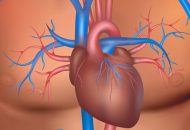A study by the Northern New England Cardiovascular Disease Group Consortium recently published online identified all patients with aortic valve stenosis treated with surgical or transcatheter aortic valve replacement between 2016 and 2022 in Maine, New Hampshire, and Vermont (USA). These patients were divided for analysis into three age groups: under 65 years old, 65…
TAVR in the Different Types of Aortic Stenosis
Aortic stenosis (AS) is classified according to gradient into high flow and high gradient (D1), low flow-low gradient with reduced ejection fraction (D2), and paradoxical low flow-low gradient with conserved ejection fraction (D3). D3 AS is characterized by ≥50% ejection fraction, but with systolic volume index ≤35 ml/min. Post TAVR evolution of D2 and D3…
Short-Term Outcomes of TAVR in Asymptomatic or Minimally Symptomatic Patients
Aortic valve replacement (AVR) is indicated for symptomatic aortic stenosis (AS), while close follow-up is recommended for asymptomatic patients, unless they have elevated aortic gradients, low ejection fraction, or abnormal stress tests. However, the optimal timing to perform AVR is uncertain, especially with recent evidence suggesting that patients with AS associated with signs of myocardial…
ACURATE Neo2: One-Year Hemodynamic and Clinical Benefit Results
Both Acurate Neo2 and its predecessor, Acurate Neo, have proven their safety and efficacy in the percutaneous treatment of severe aortic stenosis. The Acurate platform offers a lower gradient and a larger effective orifice area, as well as a low risk of periprocedural complications, according to previous registries. However, the first-generation Acurate device had some…
Is AS Only Important When Severe?
Aortic stenosis (AS) is a progressive disease associated with morbidity and mortality, especially in severe cases. However, recent studies have revealed that moderate stenosis can also have unfavorable consequences in the course of the disease. One of the challenges lies in that determining its severity is sometimes difficult due to discrepancies between valve area, gradient,…
Low Gradient, Normal Flow Aortic Stenosis: Changes in Quality of Life with TAVR
There is no question as regards the recommended treatment for symptomatic severe aortic stenosis, seeing as both transcatheter and surgical aortic valve replacement (TAVR and SAVR) have shown to significantly improve prognosis. This is despite the fact that there is still certain ambiguity around its characterization, which looks to define it according to hemodynamic severity…
Untreated Aortic Stenosis: Associated Mortality and a Call to Attention
The progression of aortic stenosis has been extensively studied and is well-known. As observed, in its advanced stages, this condition entails high morbidity and a marked decrease in survival. Both North American and European guidelines recommend treatment when faced with severe valve disease. However, true severity can be difficult to determine due to discordant data,…
Is TAVR Beneficial in Cardiogenic Shock?
The presence of cardiogenic shock (CS) in a setting of aortic stenosis ranges from 1% to 4%. The prognosis for this scenario is ominous due to subendocardial ischemia, which presents as a decrease in ventricular preload and an increase in afterload. Aortic valvuloplasty has been used in this context, but, unfortunately, it has been associated…
Moderate Aortic Stenosis: We Should Start Assessing It More Thoroughly
Moderate aortic stenosis (MAS) encompasses a broader spectrum than severe aortic stenosis. However, its progression has not yet been fully elucidated. While there are reports suggesting that this condition is not as benign as initially believed, there is a need to consider early interventions in certain instances. Researchers conducted an analysis from January 2016 to…
What Is the Prognosis of an Acute Myocardial Infarction in the Presence of Moderate Aortic Stenosis?
Aortic stenosis (AS) is a common condition that shares risk factors with coronary artery disease. Many patients can suffer from both diseases simultaneously, something that increases the risk of acute myocardial infarction in the presence of aortic stenosis. AS can cause ischemia even in the absence of coronary artery disease, due to ventricular hypertrophy, increased…









